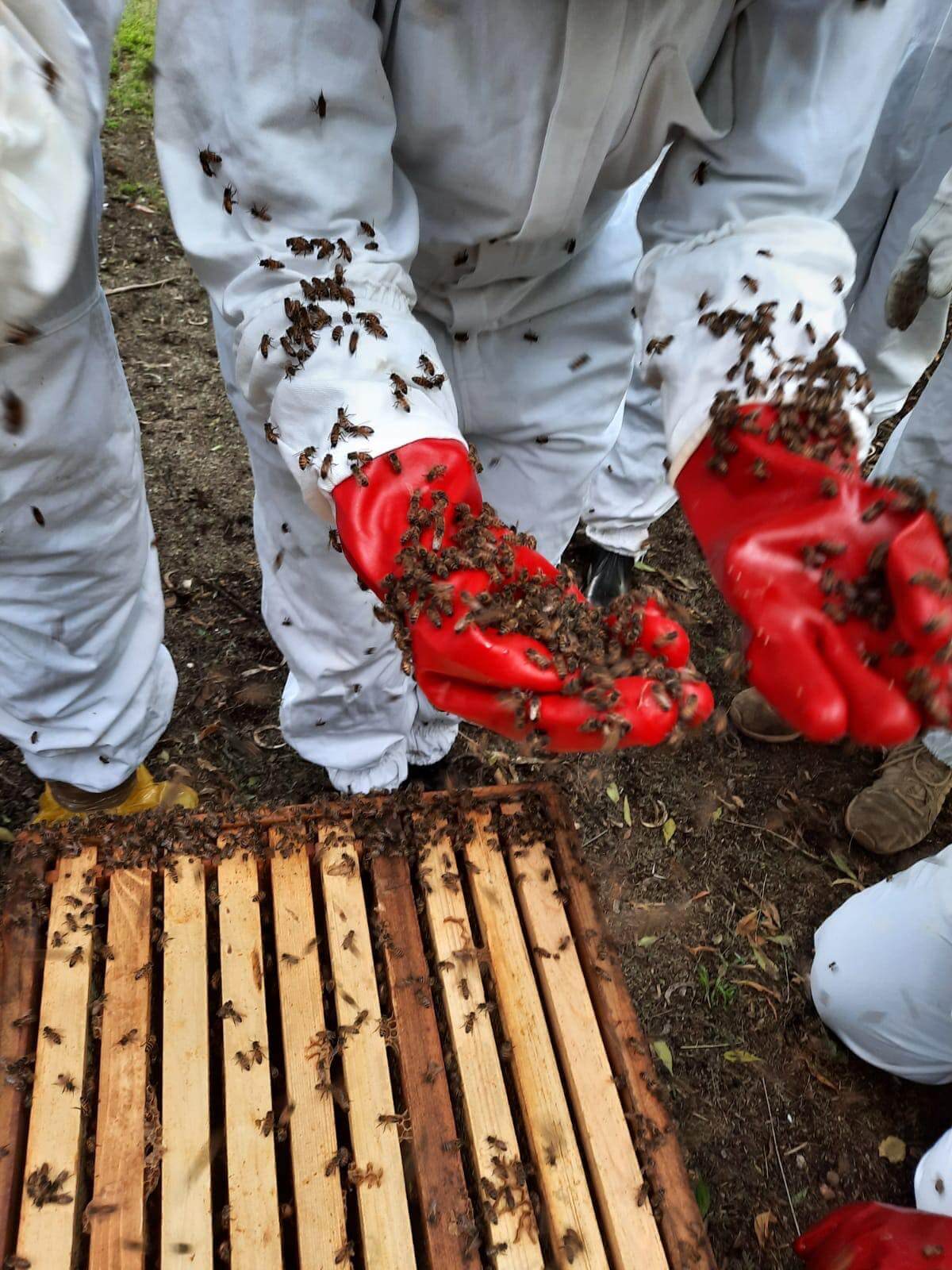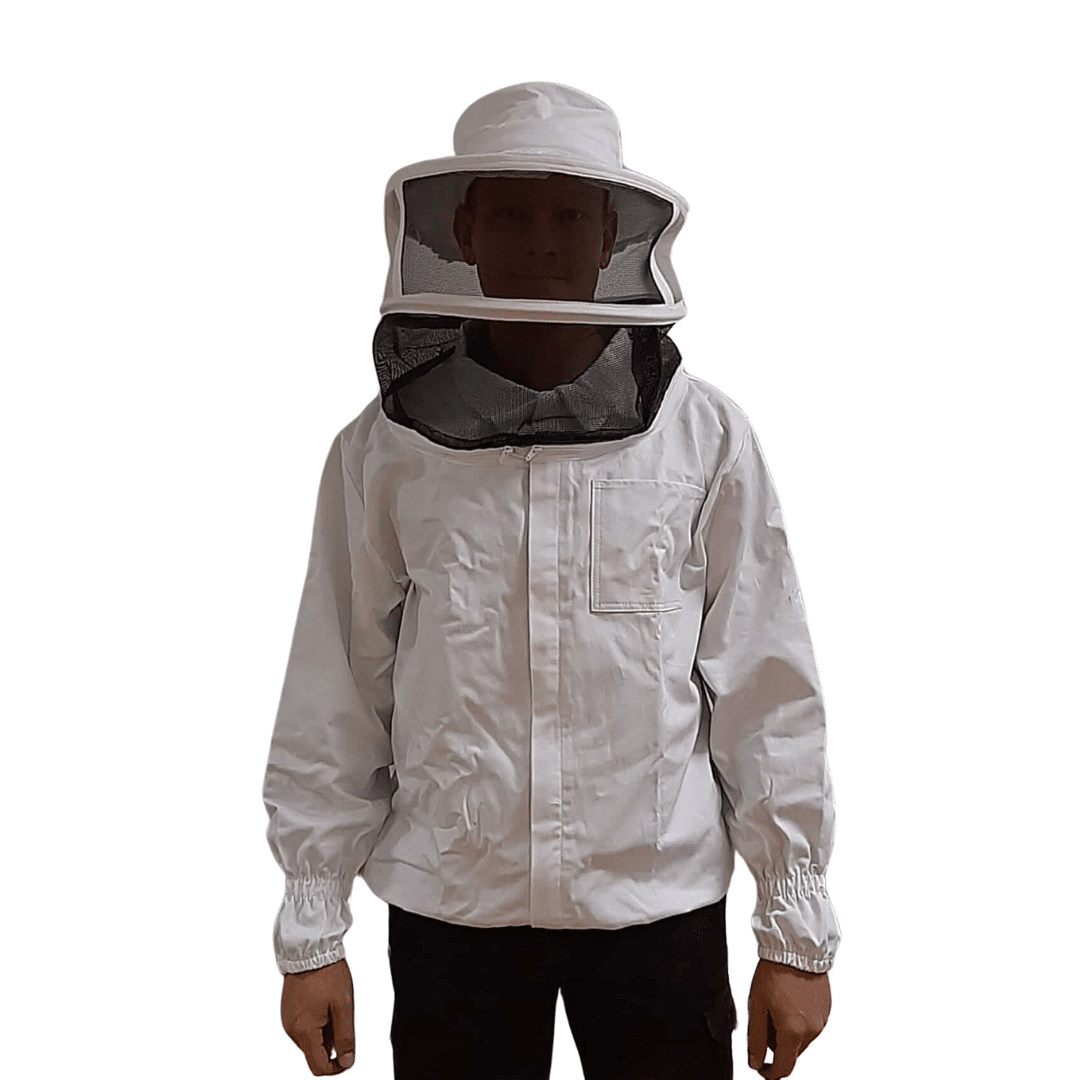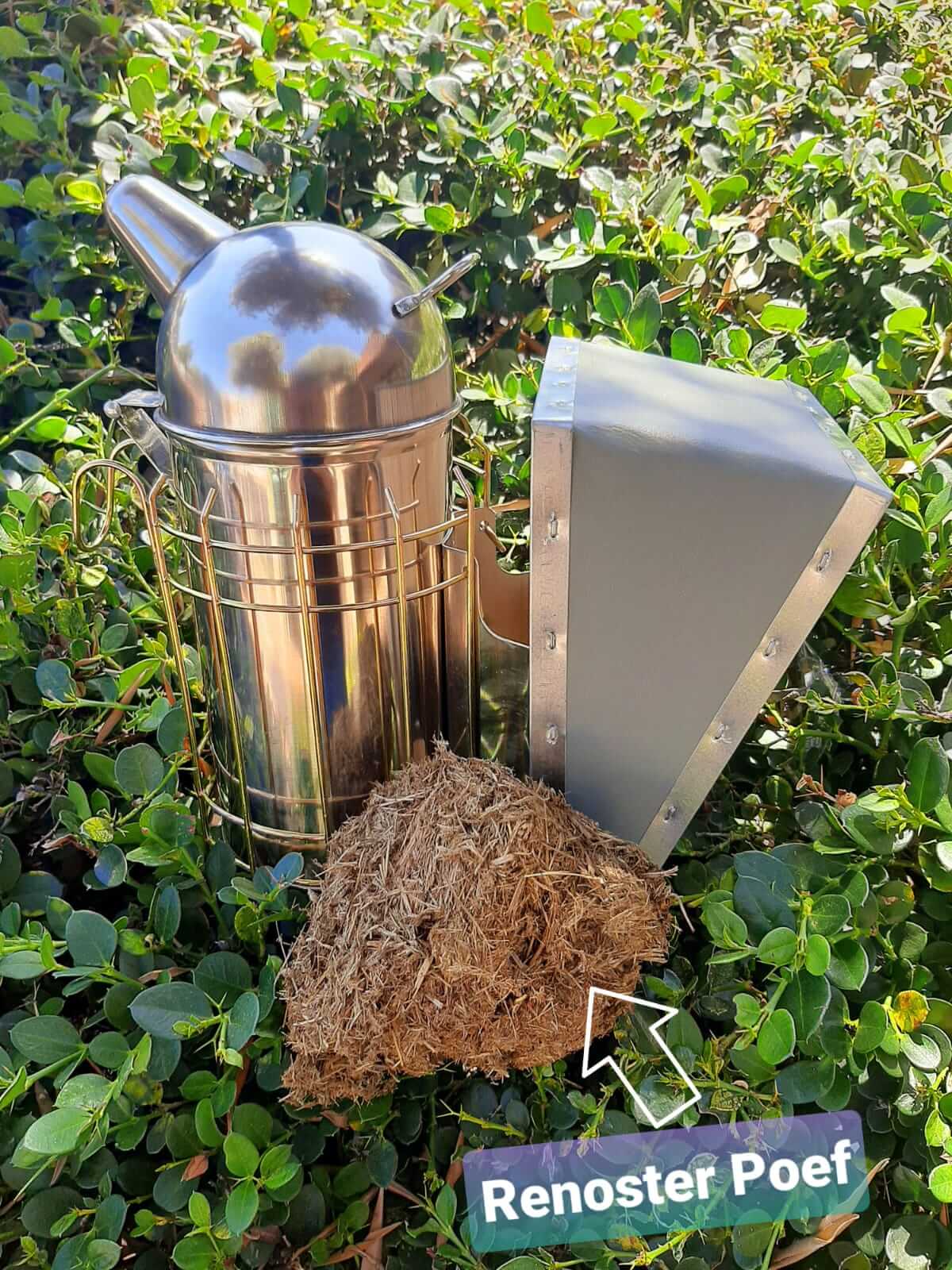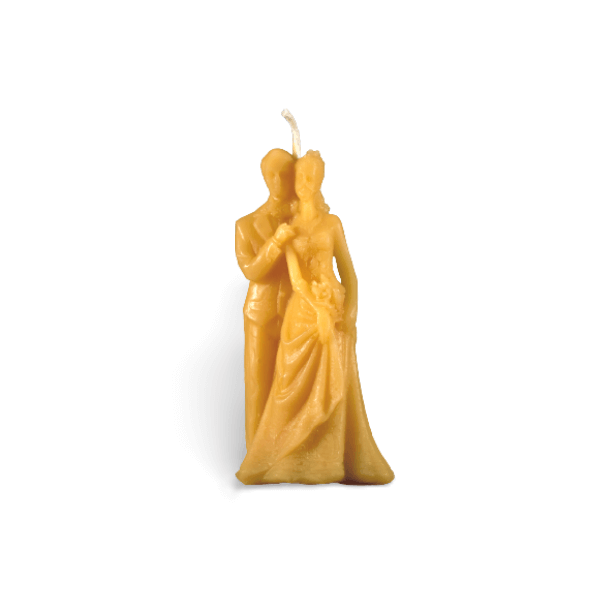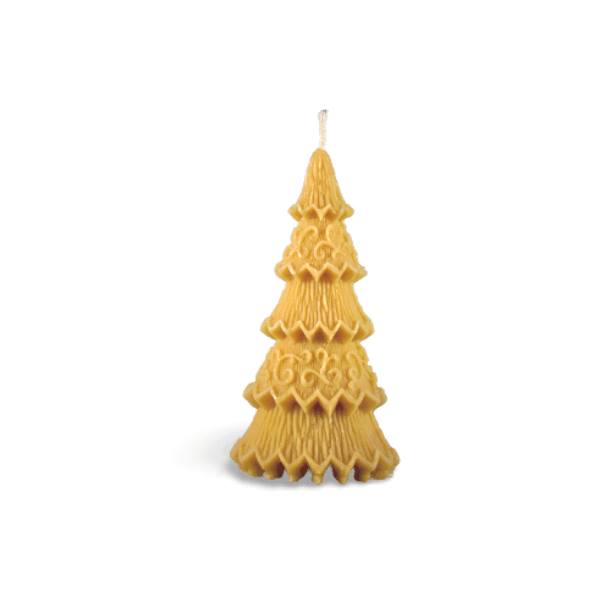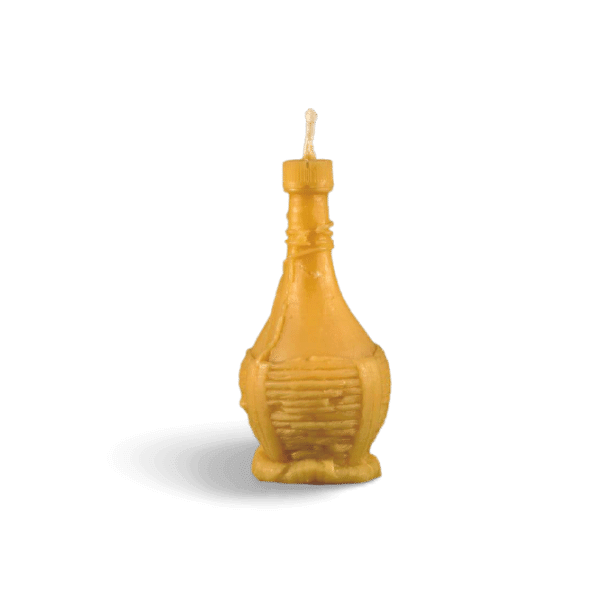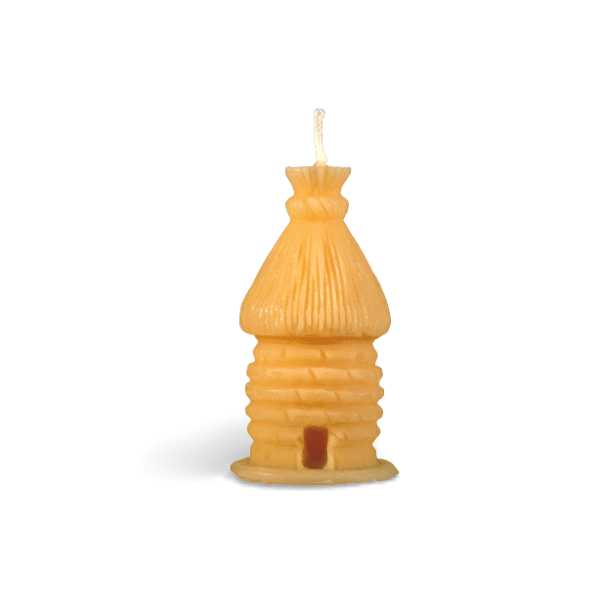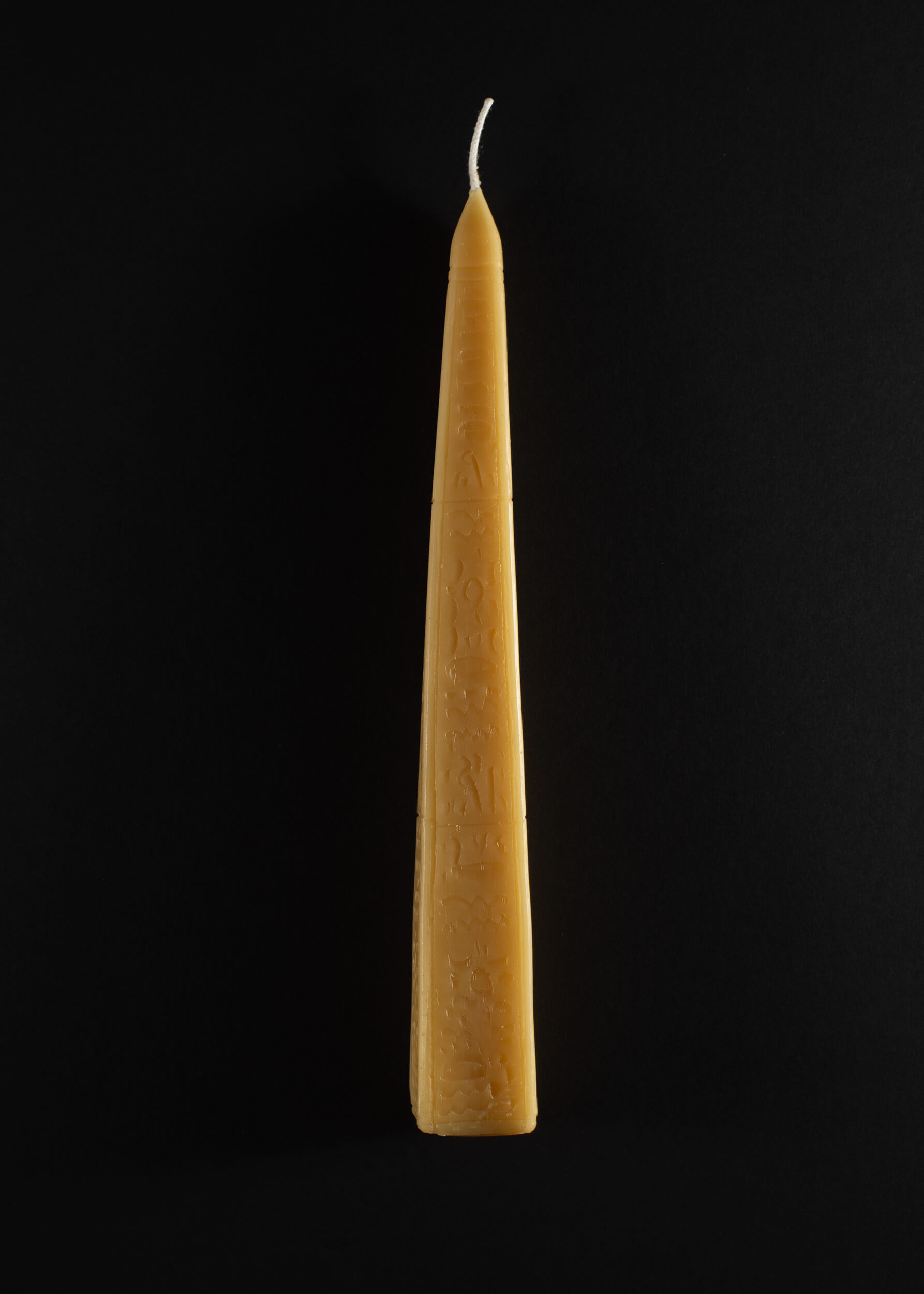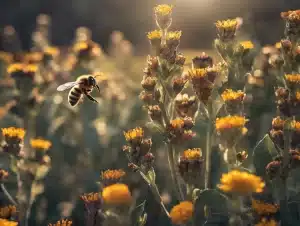Unraveling the Ancient Beekeeping Legacy of the Khoi San People!
Beyond the horizon of recorded history, lies an ancient beekeeping legacy woven by the Khoi San people—a tale that harmonizes nature, culture, and bees. As we venture into the past, Bee Ware™, the Centurion-based champion of beekeeping knowledge, invites you to step into the world of the Khoi San and their captivating journey in beekeeping.
With our ambassadorial campaign filled with humour and historical reverence, we present the bee-autiful story of the Khoi San and their harmonious relationship with bees.
Ancient Beekeeping Khoi San People: Stewards of the Land
Dating back thousands of years, the Khoi San people are considered one of Africa’s oldest indigenous communities. Living in harmony with nature, they developed a deep understanding of the land and its flora and fauna.
Among the many wonders they cherished, bees held a special place in their hearts.
The first indication of humans with bees is depicted by the Khoisan rock art over 200 years old.
The Ancient Art of Beekeeping: Honoring the Honey Harvest
For the Khoi San, beekeeping was more than just a means of obtaining honey—it was a sacred tradition steeped in reverence for nature’s gifts. Ancient rock art and artifacts discovered in southern Africa reveal their intimate connection with bees and beekeeping practices.
With a kindred spirit, the Khoi San celebrated the honey harvest with festivities that united their community like a well-told joke.
The Khoisan people from the inner regions of southern Africa speak of the bird that guides them to honey. This Honeyguide actually lures or signals by chattering and making noises and whistling taking one to the location of a bee hive, where, once discovered, both the KhoiSan and honeyguide get to benefit from the golden food source and bee larvae.
None the less, the Honeyguide is renowned for leading man and baboon to a beehive, from which the man or baboon would enjoy a rich feast, leaving for its guiding friend, a gift of gratitude, honeycomb and bee larvae.
Traditional Beekeeping Techniques: From Hollow Logs to Tree Hives
The Khoi San’s beekeeping techniques were simple yet ingenious. They crafted bee-friendly hives from natural materials, such as hollow logs and tree cavities, providing bees with cozy homes.
Much like a seasoned comedian delivering punchlines with precision, the Khoi San’s methods ensured the well-being of their bee colonies and the sustainable harvesting of honey.
The San of the Outeniquas (a KhoiSan word meaning ‘honey mountains’) were well known as honey traders, bringing down buckskin bags of honey to barter with the coastal Khoikhoin.
The Spiritual Connection with Bees: A Bee-lief System
To the Khoi San, bees were not just insects but sacred beings intertwined with their spiritual beliefs.
Bees were seen as messengers connecting the earthly and spiritual realms, much like how humor bridges the gap between hearts.
The Khoi San’s profound connection with bees exemplified their respect for nature’s delicate balance.
Botanist Peter Thunberg commented on the way local people named sites after honey. There is, in the Eastern Cape, the Heuningklip (honey stone) close to the Heuningklip river. The nearest town is Steytlerville. The explorer Francois le Vaillant wrote of the bee swarms he saw, of the variety of fynbos flowers on which the bees fed. He stated that the word Outeniqua meant “a man loaded with honey.” Strife continued with the hives coming close to being destroyed by some of the greedy honey seekers. Circa 1800s.
William J Burchell, an explorer in the early 19th century, thought it strange that none of the honey gatherers had attempted – seeing that there was a demand for the product – to organise bee hives instead of looting the wild hives. [https://factsfound.co.za/index.php/2016/04/04/honey-the-khoisan-and-the-settlers/]
The Legacy of the Khoi San in Beekeeping
As time passed, the Khoi San’s ancient traditions around beekeeping left a lasting legacy. Their harmonious relationship with bees and the land inspired future generations to embrace sustainable practices and cultivate a deep connection with nature.
Like a timeless joke, their beekeeping heritage continues to resonate, reminding us of the importance of coexistence with our winged companions.
As early as the late 15th century the Portuguese explorer Vasco da Gama recorded how sailors went ashore while his ships were anchored in a bay now known as St Helena Bay, saw and caught a man, not tall, collecting honey from a hive attached to a low growing bush. They wanted what he had – honey. He was later released. In those days the sailors suffered from scurvy due to a bad diet and honey was perceived as a medicine.
These interactions, for various reasons, would continue as more and more ships sailed along the South African coastline on their way to India.
Conclusion:
The enchanting journey through the ancient beekeeping legacy of the Khoi San has left us awe-struck by their profound understanding of nature’s delicate dance. Their beekeeping practices were more than just a means of sustenance—they were a reflection of their deep-rooted cultural values and spiritual connection with bees.
As we reflect on the wisdom of the Khoi San, let their legacy inspire us to nurture a similar harmonious relationship with bees and the natural world. Visit Bee Ware™ at www.beeware.co.za to celebrate the ancient traditions of beekeeping and to learn how the Khoi San’s bee-autiful story continues to inspire and enrich the modern beekeeping community.
Bee ready to embrace the timeless wisdom of the Khoi San and embark on a journey that unites us with the ancient dance of bees. Join Bee Ware™ as we pay homage to the stewards of the land and the keepers of beekeeping wisdom—the Khoi San people!

Starter Kit (With Boots & No Hives) [Choose Suit Size]
R2800,00 – R3140,00We've put together the best starter Kit for beginner beekeepers to get started keeping bees!
You may also want to do a bee course or our online masterclass as well! We do provide bee books in-store and online for delivery too!
The Best Beekeeping Starter Kit (choose your size below)
Starter Kit (No Boots & No Hives) [Choose Suit Size]
R2599,00 – R2850,00We've put together the best starter Kit for beginner beekeepers to get started keeping bees!
You may also want to do a bee course or our online masterclass as well! We do provide bee books in-store and online for delivery too!
The Best Beekeeping Starter Kit (choose your size below)
Shea Butter 500ml
R225,00Shea Butter
Great product to add to your creams etc.
This product is an anti-inflammatory, antioxidant, moisturizer, anti-bacterial, anti-fungal and prevents acne.
Sponge cleaner for extractors
R120,00Sponge on a stick!
Cleaning your honey extractor without taking it apart!
Frame Wiring Jig
Frame Wiring Jig
Making maintenance easier one frame at a time!!
Beekeeping Gum Boots (Choose size)
R290,00Beekeeping Gum boots for sale in Centurion store at Bee Ware® and online by courier nationwide!
Commercial Bee Removal Course - 24 + 25 November 2025
R3750,00How any beekeeper can safely remove bees doing a bee removal when you use our techniques, equipment and make extra money for your business!
Dates: 25 + 26 November
Venue: Midrand
Commercial Bee Removal Course - 27 + 28 October 2025
R3750,00How any beekeeper can safely remove bees doing a bee removal when you use our techniques, equipment and make extra money for your business!
Dates: 25 + 26 November
Venue: Midrand
Commercial Bee Removal Course - 29 + 30 September 2025
R3750,00How any beekeeper can safely remove bees doing a bee removal when you use our techniques, equipment and make extra money for your business!
Dates: 25 + 26 November
Venue: Midrand
Commercial Bee Removal Course - 25 + 26 August 2025
R3750,00How any beekeeper can safely remove bees doing a bee removal when you use our techniques, equipment and make extra money for your business!
Dates: 25 + 26 November
Venue: Midrand
Commercial Bee Removal Course - 28 + 29 July 2025
R3750,00How any beekeeper can safely remove bees doing a bee removal when you use our techniques, equipment and make extra money for your business!
Dates: 25 + 26 November
Venue: Midrand
Commercial Bee Removal Course - 30 June & 1 July 2025
R3750,00How any beekeeper can safely remove bees doing a bee removal when you use our techniques, equipment and make extra money for your business!
Dates: 25 + 26 November
Venue: Midrand
Commercial Bee Removal Course - 26 + 27 May 2025
R3750,00How any beekeeper can safely remove bees doing a bee removal when you use our techniques, equipment and make extra money for your business!
Dates: 25 + 26 November
Venue: Midrand
Commercial Bee Removal Course - 5 + 6 May 2025
R3750,00How any beekeeper can safely remove bees doing a bee removal when you use our techniques, equipment and make extra money for your business!
Dates: 25 + 26 November
Venue: Midrand
Commercial Bee Removal Course - 24 + 25 March 2025
R3750,00How any beekeeper can safely remove bees doing a bee removal when you use our techniques, equipment and make extra money for your business!
Dates: 25 + 26 November
Venue: Midrand
Practical Intermediate Bee Course - 15 November 2025
R1595,00The Practical Bee Course for Intermediate Level Beekeepers to develop your bee farming skills with our 17 years of Bee Training Experience
Practical Intermediate Bee Course - 25 October 2025
R1595,00The Practical Bee Course for Intermediate Level Beekeepers to develop your bee farming skills with our 17 years of Bee Training Experience
Practical Intermediate Bee Course - 20 September 2025
R1595,00The Practical Bee Course for Intermediate Level Beekeepers to develop your bee farming skills with our 17 years of Bee Training Experience
Practical Intermediate Bee Course - 16 August 2025
R1595,00The Practical Bee Course for Intermediate Level Beekeepers to develop your bee farming skills with our 17 years of Bee Training Experience
Practical Intermediate Bee Course - 19 July 2025
R1595,00The Practical Bee Course for Intermediate Level Beekeepers to develop your bee farming skills with our 17 years of Bee Training Experience
Practical Intermediate Bee Course - 21 June 2025
R1595,00The Practical Bee Course for Intermediate Level Beekeepers to develop your bee farming skills with our 17 years of Bee Training Experience
Practical Intermediate Bee Course - 24 May 2025
R1595,00The Practical Bee Course for Intermediate Level Beekeepers to develop your bee farming skills with our 17 years of Bee Training Experience
Practical Intermediate Bee Course - 15 March 2025
R1595,00The Practical Bee Course for Intermediate Level Beekeepers to develop your bee farming skills with our 17 years of Bee Training Experience
Practical Intermediate Bee Course - 15 February 2025
R1595,00The Practical Bee Course for Intermediate Level Beekeepers to develop your bee farming skills with our 17 years of Bee Training Experience
Easy Buzzing Bee Course - Beginner - 6 December 2025
R995,00Our flagship Easy Buzzing Bee Course for Beeginner Beekeepers with 20 years experience helping newbee beekeepers kick start their beekeeping adventure!
Easy Buzzing Bee Course - Beginner - 1 November 2025
R995,00Our flagship Easy Buzzing Bee Course for Beeginner Beekeepers with 20 years experience helping newbee beekeepers kick start their beekeeping adventure!
Easy Buzzing Bee Course - Beginner - 4 October 2025
R995,00Our flagship Easy Buzzing Bee Course for Beeginner Beekeepers with 20 years experience helping newbee beekeepers kick start their beekeeping adventure!
Easy Buzzing Bee Course - Beginner - 6 September 2025
R995,00Our flagship Easy Buzzing Bee Course for Beeginner Beekeepers with 20 years experience helping newbee beekeepers kick start their beekeeping adventure!
Easy Buzzing Bee Course - Beginner - 2 August 2025
R995,00Our flagship Easy Buzzing Bee Course for Beeginner Beekeepers with 20 years experience helping newbee beekeepers kick start their beekeeping adventure!
Easy Buzzing Bee Course - Beginner - 5 July 2025
R995,00Our flagship Easy Buzzing Bee Course for Beeginner Beekeepers with 20 years experience helping newbee beekeepers kick start their beekeeping adventure!
Easy Buzzing Bee Course - Beginner - 7 June 2025
R995,00Our flagship Easy Buzzing Bee Course for Beeginner Beekeepers with 20 years experience helping newbee beekeepers kick start their beekeeping adventure!
Easy Buzzing Bee Course - Beginner - 17 May 2025
R995,00Our flagship Easy Buzzing Bee Course for Beeginner Beekeepers with 20 years experience helping newbee beekeepers kick start their beekeeping adventure!
Eucarel Ointment (Pain relief balm)
R105,00Eucarel Ointment - 90g
Made from 100% natural Beeswax and natural ingredients!Commercial Bee Removal Course - 2025
R3750,00How any beekeeper can safely remove bees doing a bee removal when you use our techniques, equipment and make extra money for your business!
Dates: April | May | June * See Dates Below
Venue: Midrand
Bee Jacket - Jockey (Choose size)
R1450,00 – R1690,00Rated 5.00 out of 5
Our bee jackets are from the waist up! Get detachable bee veil with the jacket made from bull denim. It's durable and costs less than the bee suit. You would still be required to wear jeans or other thick pants for protection on your legs. Boots are also recommended.
Bee Jacket - Jockey - Size Medium
R1450,00Rated 5.00 out of 5
Bee jackets or bee jockeys for beekeepers are the budget version of a full bee suit.
Creamed Aloe Honey - 500g Bottle
R100,00100% locally sourced all natural Aloe Honey is light in colour and light tasting Aloe Davyana fresh from the bush veld. It has distinct Highveld Aloe taste and packed full with honey goodness.
Protein Feed - Bee Pollen Substitute 500g
R75,00Protein Feed for Bees as a Pollen Substitute and bee food supplement!
Easy Buzzing Bee Course - Beginner - December 7
R995,00Our flagship Easy Buzzing Bee Course for Beeginner Beekeepers with 20 years experience helping newbee beekeepers kick start their beekeeping adventure!
Easy Buzzing Bee Course - Beginner - November 2
R995,00Our flagship Easy Buzzing Bee Course for Beeginner Beekeepers with 17 years experience helping newbee beekeepers kick start their beekeeping adventure!
Commercial Bee Removal Course - November 25 + 26
R3750,00How any beekeeper can safely remove bees doing a bee removal when you use our techniques, equipment and make extra money for your business!
Dates: 25 + 26 November
Venue: Midrand
Practical Intermediate Bee Course - 23 November
R1595,00The Practical Bee Course for Intermediate Level Beekeepers to develop your bee farming skills with our 17 years of Bee Training Experience
Commercial Bee Removal Course - October 21 & 22
R3750,00How any beekeeper can safely remove bees doing a bee removal when you use our techniques, equipment and make extra money for your business!
Dates: 28 + 29 October
Venue: Midrand
Practical Intermediate Bee Course - 19 October
R1595,00The Practical Bee Course for Intermediate Level Beekeepers to develop your bee farming skills with our 17 years of Bee Training Experience
Easy Buzzing Bee Course - Beginner - October 5
R995,00Our flagship Easy Buzzing Bee Course for Beeginner Beekeepers with 20 years experience helping newbee beekeepers kick start their beekeeping adventure!
16 Way Bee Escape
R80,0016 Way Bee Escape for helping to get bees out of your super chamber for easier honey harvesting collection.
Commercial Bee Removal Course - September 30 + October 1
R3750,00How any beekeeper can safely remove bees doing a bee removal when you use our techniques, equipment and make extra money for your business!
Dates: 30th September + 1st October
Venue: Midrand
Practical Intermediate Bee Course - 21 September
R1595,00The Practical Bee Course for Intermediate Level Beekeepers to develop your bee farming skills with our 17 years of Bee Training Experience
Practical Intermediate Bee Course - December 9
R1595,00The Practical Bee Course for Intermediate Level Beekeepers to develop your bee farming skills with our 17 years of Bee Training Experience
Easy Buzzing Bee Course - Beginner - December 2
R995,00Our flagship Easy Buzzing Bee Course for Beeginner Beekeepers with 17 years experience helping newbee beekeepers kick start their beekeeping adventure!
Commercial Bee Removal Course - 25+26 November
R3750,00How any beekeeper can safely remove bees doing a bee removal when you use our techniques, equipment and make extra money for your business!
Dates: 27 + 28 November
Venue: Midrand
Protein Feed - Bee Pollen Substitute 250g
Protein Feed for Bees as a Pollen Substitute and bee food supplement!
White Beeswax Pellets - 5Kg Bulk
Our natural beeswax pellets are hand-poured and can be used for cosmetics, making candles and food coating. What are you going to use it for?
White Beeswax Pellets - 1kg Bag
Rated 5.00 out of 5
Our natural beeswax pellets are hand-poured and can be used for cosmetics, making candles and food coating. What are you going to use it for?
White Beeswax Pellets - 300g Bag
Our natural beeswax pellets are hand-poured and can be used for cosmetics, making candles and food coating. What are you going to use it for?
Hive Entrance
R40,00The large beetle entrance guard prevents beetles from entering the beehive.
Langstroth Bee Hotel
R3880,00Langstroth Bee hive - *Shipping not included*
Wooden Pine bee hives with aluminium lid, floor, super, brood & all frames WAX STRIPPED and wired. Treated with Waksol.Small Beetle Trap Plastic with hooks - Reusable
Manage and remove small hive beetles with this beetle trap which fits between the frames inside the beehive.
Soap: African Black Crumble
R51,00Fragrances:
Cheeky Grapefruit & Cedarwood
Soap: Citrus Blast
R55,00Fragrances:
Sweet Orange, Grapefruit, Lemon, Lime, Benzoin, Patchouli & Calendula Petals.
Soap: Creamy Honey & Oatmeal Soap
R48,00Fragrances:
Creamy Honey & Oatmeal
Soap: Horse & Hound
R45,00Fragrances:
Neem & Bug Repelling Essential Oils
Soap: Frangipani & Calendula Petals
R48,00Fragrances:
Frangipani fragrance
Soap: Floral Fantacy
R55,00Fragrances:
Geranium Rose, Neroli, Jasmine & Exotic Ylang Ylang
Soap: Egyptian Goddess
R55,00Fragrances:
Activated Charcoal, Colloidal Gold, Peppermint & Tea-Tree
Soap: Pink Himalayan Salt
R43,00Fragrances:
Pink Himalayan Salt
Soap: Rosey Rosehip
R55,00Fragrances:
With Anti-ageing Rosehip and Geranium Rose
Soap: Silver Lining Restoration
R55,00Fragrances:
Colloidal Silver, Geranium Rose & Sweet Orange
Soap: Bedtime Bliss Soap Bar
R55,00Fragrances:
Lavender & Chamomile
Hive Travel Lid
R185,00Commercial Bee Removal Course - October 24+25th
R3750,00How any beekeeper can safely remove bees doing a bee removal when you use our techniques, equipment and make extra money for your business!
Dates: 24+25 October
Venue: Midrand
Lipbalm for amazing lips
R30,00Lipbalm for amazing lips - Hand made safe and protect lips from dryness, chapped lips and cracked lips.
Wooden Frame Cleaner Scraper
Wooden Frame Scraper cleans frames and frame wax sheet groove.
Plastic Frame Scraper Cleaner
Plastic Frame Scraper hook for cleaning frames and scraping wax sheet groove.
Honey Uncapping Planer Scraper
Electric Honey Uncapping Planer for removing capping seals on your honey comb
The Get Bees by O-Bee-Wan Colony Catcher Pack
R140,00 – R495,00Get Bees by watching my free video to get my 3 Best Methods on How To Catch Bees
Easy Buzzing Bee Course - Beginner - 3rd Dec
R995,00Our flagship Easy Buzzing Bee Course for Beeginner Beekeepers with 17 years experience helping newbee beekeepers kick start their beekeeping adventure!
Commercial Bee Removal Course - Nov 27 + 28
R3750,00How any beekeeper can safely remove bees doing a bee removal when you use our techniques, equipment and make extra money for your business!
Dates: 27th + 28th November
Venue: Midrand
Yellow Beeswax Pellets - 1kg Bag
Rated 5.00 out of 5
Our natural beeswax pellets are hand-poured and can be used for cosmetics, making candles and food coating. What are you going to use it for?
Practical Intermediate Bee Course - 21 Sept
R1595,00The Practical Bee Course for Intermediate Level Beekeepers to develop your bee farming skills with our 20 years of Bee Training Experience
Replacement Bellow (for your Smoker)
Sometimes a bellow goes bust and needs replacing with a spare bellow for your smoker.
Bee Removal PPE Kit
R86,00 – R3875,00Commercial Bee Removal Kit for Professional Safe Bee Removal Operators
Bee Suit - 6XLarge
R2300,00Best bee suit in South Africa. Includes bee veil and hood with zips and bands! Beekeepers your body needs to be protected! It is always advisable that you wear protective clothing, bee gloves and boots when working with bees. Ensure you are double-checked before you begin an inspection.
*Shipping not included*
Silica Gel Wax Foundation Mold
Propolis Tincture 30ml
R199,00Propolis Tincture 30ml - Propolis is nature's antiseptic agent.
Propolis Skin Serum Gel 30ml
R199,00Propolis Skin Serum Gel is effective in reducing acne and skin breakout for those with sensitive, acne-prone skin.
Propolis Balm 30ml
R199,00Propolis Balm - Formulated to help soothe the skin and help in the healing process.
Propolis Skin Serum 30ml
R199,00Propolis Skin Serum.
Queen Rearing Kit
R720,00Queen Rearing Kit for making queen bees
Bee Suit - 5XLarge
R2117,00Rated 5.00 out of 5
Best bee suit in South Africa. Includes bee veil and hood with zips and bands! Beekeepers your body needs to be protected! It is always advisable that you wear protective clothing, bee gloves and boots when working with bees. Ensure you are double-checked before you begin an inspection.
*Shipping not included*
Aloe Honey - 500g Bottle
R100,00100% locally sourced all natural Aloe Honey is light in colour and light tasting Aloe Davyana fresh from the bush veld. It has distinct Highveld Aloe taste and packed full with honey goodness.
Bee Fuel For Your Smoker
The best bee fuel for your bee smoker.
Wild Bee Fuel is made from rhino ‘poef’ (aka kak)! Burns for long. Makes great bee fuel smoke!
Well-Beeing Booster For Bees
Booster for bees health and well-being with bee food and bee feed substitute.
Easy Buzzing Bee Course - Beginner - 5 October
R995,00Our flagship Easy Buzzing Bee Course for Beeginner Beekeepers with 20 years experience helping newbee beekeepers kick start their beekeeping adventure!
Inner Gloves - Cotton
R25,00This important Beekeeping Inner Gloves help alleviate sweat and odour in the PVC Gloves while managing your beehives and bees.
Cutting Board Wax - 50g
R95,00Cutting Board Wax made from all natural beeswax
Real Honey - 500g Glass Jar
R135,00100% Raw Pure, Unadulterated Honey
Honey Bucket 1kg
R178,00100% Raw Honey bucket 1kg for honey lovers!
Real Honey - 500g Hexagon Jar
R120,00100% Pure Honey in 500g stunning glass jar
Real Honey - 500g Squeeze Bottle
R100,00100% Pure Honey Squeeze bottle 500g from local beekeepers in South Africa.
Protein Feed - Bee Pollen Substitute 1kg
R130,00Protein Feed for Bees as a Pollen Substitute and bee food supplement!
Baby Nappy Rash Cream 50ml
Baby Nappy Cream - Hand made baby safe and protect baby from nappy rash preventing red, sore nappy skin burns.
Large Beetle Entrance Guard (Pair)
R50,00The large beetle entrance guard prevents beetles from entering the beehive.
Bee Vacuum Box (No Vacuum Cleaner)
R3875,00This Bee Vacuum KIT is designed for you to remove bees and relocate them safely with less bee losses and in better survival condition!
Yellow Beeswax Pellets - 5Kg Bulk
Rated 5.00 out of 5
Our natural beeswax pellets are hand-poured and can be used for cosmetics, making candles and food coating. What are you going to use it for?
20-Frame Honey Extractor - Electric Programmable spinner
20-Frame Honey Extractor - Electric Programmable spinner
- *Shipping not included*
24-Frame Honey Extractor - Electric Programmable
24-Frame Honey Extractor - Electric Programmable spinner
- *Shipping not included*
Honey Settling Tank, 100kg Load
R2470,00Honey Settling tank - *Shipping not included*
Stainless steel honey settling tank with a 100kg load for used as a settling tank with honeygate tap included, lid included.12-Frame Honey Extractor - Electric Programmable Honey Spinner
12-Frame Honey Extractor - Electric Programmable spinner
- *Shipping not included*
4-Frame Honey Extractor - Manual
R4940,00Rated 4.50 out of 5
4-Frame Stainless Steel Honey Extractor - Manual.
Fits both super frames and brood frames for spinning honey.Honey Heating Tank S/Steel - 110kg Load
R9995,00Honey heating tank - *Shipping not included*
Stainless steel honey tank with a 110kg load and heating element.4-Frame S/Steel Honey Extractor - Electric
R6380,00Rated 5.00 out of 5
4-Frame Stainless Steel Honey Extractor - Electric
Honey Settling Tank - 50kg Stainless Steel
R1340,00Honey Settling Tank - 50kg Stainless Steel
Stainless Steel Honey Settling Tank - 30kg
R989,00Stainless Steel Honey Settling Tank - 30kg
Honey Bottling Machine
R79500,00Honey bottling machine for honey jar filling
Yellow Beeswax Pellets - 300g Bag
Our natural beeswax pellets are hand-poured and can be used for cosmetics, making candles and food coating. What are you going to use it for?
Yellow Beeswax Pellets - 500g Bag
Rated 5.00 out of 5
Our natural beeswax pellets are hand-poured and can be used for cosmetics, making candles and food coating. What are you going to use it for?
White Beeswax Pellets - 500g Bag
Rated 5.00 out of 5
Our natural beeswax pellets are hand-poured and can be used for cosmetics, making candles and food coating. What are you going to use it for?
Tattoo Balm - 30g
R75,00Our tattoo balm protects your newly tattooed area from rubbing onto clothes and getting irritated through friction.
Tattoo Balm - 80g
R125,00Rated 5.00 out of 5
Our tattoo balm protects your newly tattooed area from rubbing onto clothes and getting irritated through friction.
Cutting Board Wax - 120g
R160,00Cutting Board Wax 120g Tin
For preserving and protecting all wood work, wood boards, butcher blocks, wood furniture and antique wood restoring.Beard Balm - 100ml
R150,00Beard Balm - 50ml
Beard balm for men with natural beeswax and facial hair enhancing ingredients that provide grooming with style and savvy.Assembled Brood Frame - Single
R35,00Assembled brood frames for Langstroth bee hives now available.
Assembled Super Frame - Single
R31,00Super frames for beehives
Also come wired so they can help with the foundation of the comb when the bees have built it in langstroth bee hivesBeeswax - 1kg Block
Rated 5.00 out of 5
Our natural beeswax blocks are hand-poured and can be used for cosmetics, making candles and food coating. What are you going to use it for?
Beeswax - Large Wheel
R55,00Our natural beeswax blocks are hand-poured and can be used for cosmetics, making candles and food coating. What are you going to use it for?
Beeswax - Medium Wheel
R40,00Our natural beeswax blocks are hand-poured and can be used for cosmetics, making candles and food coating. What are you going to use it for?
Beeswax - Small Wheel
R20,00Our natural beeswax blocks are hand-poured and can be used for cosmetics, making candles and food coating. What are you going to use it for?
Beeswax - Ingot
Our natural beeswax blocks are hand-poured and can be used for cosmetics, making candles and food coating. What are you going to use it for?
Candle - Large Pillar
R245,00Plain, tall, candelabra beeswax pillar candle is perfect for churches, cathedrals, synagogues and other places of worship requiring candle lights.
Hive Tool - Jagged Edge
Rated 5.00 out of 5
The next best bee tool for beekeepers after the bee smoker.
Beetle Trap Plastic - Reusable
Manage and remove small hive beetles with this beetle trap which fits between the frames inside the beehive.
Beeswax Candle - Hand Rolled Large
R40,00Beeswax Candle Hand Rolled!
This beeswax candle is hand rolled pillar style candle made from pure beeswax and burns a long time. Candles that are hand rolled look fantastic and smell a slight sweet scent like that from honey in the hive. Weight: 69.5g 20cm High 11cm DiameterCandle - Cathedral Pillar
R129,00Plain, tall, candelabra beeswax pillar candle is perfect for churches, cathedrals, synagogues and other places of worship requiring candle lights.
Candle - Pillar Multi Floral
R169,00This gorgeous looking pillar sunflower floral candle from beeswax is made by hand, hand-poured and made from pure beeswax
Candle - Santa Maria
R30,00St Mary Beeswax candles - This is a part of our religious motif perfect for church ceremonies or as candles in your altar at home.
Candle - Wedding Couple
R35,00Romantic Candles. This beautiful wedding couple beeswax candle is perfect for wedding events, anniversaries and engagements candles.
Candle - Round with Flower
R70,00This beeswax candle with sunflower and bee design is made from pure beeswax.
Candle - Bee Hive
R50,00Decorative Bee Hive Candle for Beekeepers for sale. This beautifully made beeswax candle in the shape of a beehive is perfect for a beekeeper as an ornament and display in their study, office or home!
Candle - Christmas Tree
R55,00Christmas Tree Candle - This is a beautifully moulded beeswax candle in the shape of a Christmas tree with a beautiful glowing flame.
Candle - Jarez
R55,00Candle - Jarez bottle shape beeswax candle as decorative candle and ornamental gift candle.
Candle - Halloween
R75,00This Halloween Candles inspired Jack o' Lantern beeswax candle is made out of pure beeswax. Weight: 200g. 6cm Tall.
Candle - Hut Gift Candle
R30,00African Hut Gift Candle for Sale.
Perfect as a gift candle. Decorative candle of African hut. Made by hand using beeswax! Burns long and with a glowing flame.Candle - Criss Cross Small Pillar candle
R60,00This Pillar Criss -Cross beeswax candle is symbolic of medieval times. Works well as a decorative candle. Gift Candle. Church Candle.
Candle - Eiffel Tower Pillar Gift Candle
R38,00This Eiffel Towel Pillar Candle decorative beeswax candle is perfect as decor in your study desk, workstation, bedside table or anywhere else in your living room.
Candle - Pillar Round Small Candle
R30,00Beeswax Pillar Candle. Gift candle. Decorative candle. Simple beeswax candle.
Candle - Easter Bunny Candle
R20,00Easter Bunny Decor Candle. Ideal Beeswax Candle Easter Gift Candles
Candle - Angel Decor Candle
R25,00Candle - Angel Decor Candle. Perfect for church, synagogue, angel candle.
Candle - Santa Candle
R35,00Candle - Santa Candle - Little Santa beeswax candle for decoration for Christmas and festive season candle gift!
Candle - Mrs Santa Claus Candle
R35,00Mrs. Santa Klaus beeswax candle is made from pure beeswax with cotton wick
Candle - Tapered Dinner Candles x2
R65,00Candelabra Tapered Dinner Candles x2 perfect for romantic dinners, dinner table candles and dinner candles.
Candle - Leaning Tower of Pisa Pillar Candle
R105,00Tower of Pisa Pillar Candle - decorative candle as perfect gift for someone that visited or loves Italy!
Candle - Striped Pillar Candle
R85,00Striped Pillar Candle. Perfect as gift candle. Pillar candles.
Candle - Festive Tree Pillar Candle
R98,00Festive tree Pillar beeswax candle - This medium sized is made from pure beeswax with cotton wick.
Candle - Decorated Ball Candle
R25,00Decorated Ball Candle
This delicately decorated ball ornament candle made from bees wax can be used for decorating your house, the office or both and after celebrations it can be lit to continue the experience in memory of family and special times! It has a mild beeswax scent and not overpowering. It has cotton for it's wick to burn brighter and longer. It's small enough to hang from a Christmas tree and other decoration areas or be displayed as an ornament among other festive decor too! It makes for a lovely visual decoration even while burning a bright flame with no smoke! Perfect as:- Christmas gift candle
- decorative gift candle
- ornament candle
- gift candle
- festive candle
- festive gift candle
Candle - Egyptian Obelisk Pillar Candle
R65,00Egyptian Obelisk Pillar Candle. This tall Obelisk Beeswax Candle with hieroglyphics is made by hand and with pure natural bees wax candle materials.
Candle - Floral Pillar Candle
R190,00Gothic Pillar Candles. This large gothic floral beeswax candle with cotton wick is handmade and made of pure beeswax.
Candle - Paisley Pillar Candle
R245,00Gothic Pillar Candle from Medieval times made from beeswax. Burns for days.
Candle - Pine Cone Pillar
R60,00Pine Cone Pillar Candles. This pine cone shaped beeswax candle is 100% hand made and hand poured using pure beeswax.
Candle - Heart Shape Candle
R35,00Romantic Candle. Heart Candles. This beautifully designed heart shaped beeswax candle can be used as an ornamental piece in your living room or bedroom.
External Feeder - Green
Entrance Feeder for feeding bees - Green design with longer lip goes deeper in the hive or catch box entrance.
Face & Skin Cream - Moisturising
R150,00Moisturising Shea Butter Face & Skin Cream 50ml by K.Lee
Face & Skin Cream - Pigmentation
R120,00Hints of ylang ylang, patchouli & rosemary arouse the senses. Coconut oil and beeswax combined with olive oil to bring the best natural ingredients for skin care.
Face & Skin Cream - Toner + Acne
R120,00Clary Sage face cream by K.Lee includes amazing natural ingredients that love the skin with a luxury satin feel and soft touch of clay sage.
Face & Skin Cream - Anti Ageing
R120,00Rated 4.50 out of 5
Anti-Aging Sweet Orange Face Cream by K.Lee includes amazing natural ingredients that love the skin with a luxury satin feel and soft touch of sweet orange.
Hive Toolbox
R480,00Handy wooden toolbox to store all your beekeeping hive tools for easy carry during maintenance and inspections.
Best Starter Pack [Choose Suit Size]
R4654,00 – R4920,00We've put together the best starter pack for beginner beekeepers to get started keeping bees!
You may also want to do a bee course or our online masterclass as well! We do provide bee books in-store and online for delivery too!
The Best Beekeeping Starter Kit (choose your size below)
Brass Eyelets - 200g Bag
R125,00Introducing our Brass Eyelets, an essential component for beekeepers involved in the construction and reinforcement of bee hive frames
Wax Embedder - Manual
Our Manual Wax Embedder is a game-changing tool for beekeepers, offering a simple yet effective solution for embedding wires into beeswax foundation sheets.
Wire Crimper
Whether you are assembling new frames or reinforcing existing ones, our wire crimper ensures a secure and efficient wiring experience, contributing to the stability and longevity of your hive.
8 Way Bee Escape Lid
R160,00Rated 5.00 out of 5
Beehive Stand - Large (1m)
R830,00BeeHive Stands – Keep bee off the ground away from ants
Bee hive Stand - Medium (76cm)
R795,00Rated 5.00 out of 5
BeeHive Stands – Keep bee off the ground away from ants
Beehive Stand - Small (50cm)
R760,00Hive Stands - Keep bee off the ground away from ants
Frame Holder
Bee Vac Combo (Bee Vac & Vacuum cleaner)
R4990,00This bee vacuum box is designed to suck up live honey bees without killing or hurting them. It can be used to remove bees when capturing a feral colony, or where a bee swarm has settled. Make Money with Bees and safely relocate them to start bee business in a box!
Catch Box - 6 Frame
R495,00Catch box for attracting bees.
Combined with swarm lure is a winner! Very high success rate with this combo using nuc box and swarm lure!Catch Box Ventilated Entrance - 6 Frame - Nuc box
R495,00Nuc box for attracting bees.
Combined with swarm lure is a winner! Very high success rate with this combo using nuc box and swarm lure!Gloves - PVC
30 Frame Mini Super
R650,00This 30 Frame Mini Super chamber is specially designed for bees and beekeepers to build and fill mini frames that make for perfect comb honey.
Honey Dipper - Small
Honey Dipper - Large
Concrete Hive (Bee Bunka)
Flow Hive Deep Super + Frames
R5600,00Flow Hive - Complete
R6300,00Flow Hive Frames - Set of 7
R2870,00Honey Pump - Lyson
R39995,008-Frame Electric Extractor
R14660,008-Frame Electric Honey Extractor
The 8-frame electric honey extractor is quite a machine. It is for the next level hobby beekeeper that makes the leap from hobby to side business with your beekeeping! This honey spinner is reversible, which means it doesn't need the frames to be lifted up and turned around between harvesting each side. Some extractors, but not this one, only spin one-way. What this leads to is the extractor having to be brought to a halt and all of the frames being lifted turned around and then put back into the extractor to empty the other side. This extractor, like many of our others, makes use of reversible technology so that all that you, as the beekeeper, need to do is bring the centrifuge spinner to a stop and then just switch the setting on the controller to swing the other direction. Why is this important to do? Firstly, when harvesting and spinning raw honey one has to empty the frames equally on both sides in proportions. Let me explain, you fill the extractor with honey frames and they are full on both sides. Heavily laden. If you spin one side to empty then the frame comb will break under the stress of the weight of the other side. In order to avoid this, you have to allow for only 25% - 30% of the honey on one side to be extracted before stopping and repeating the same on another side! Secondly, it saves you time not having to remove, turn around the place back inside the extractor all of the frames. Remember, too heavy on one side, and the comb breaks. Thirdly, the process to fully remove and extract as much honey from the comb as possible requires about three sets of this process. When using a reversible honey extractor, this process doesn't need to be done by you. It doesn't take twice as long to harvest honey using an extractor that does not reverse. Lastly, the 8-frame electric controller is programmable. Meaning it can be set up to run a preset command sequence. Awesome right?! Get yours today! Get more honey in less time. Get your 'wet' supers back out there in no time!BeePak Composite Hive - Plastic
R6000,00Beepak hives are composite bee hives for beekeepers.
Uncapping Fork - Wooden Handle
R115,00Rated 5.00 out of 5
Brood Chamber - Complete
Introducing our Assembled Bee hive Brood Chamber with a lid and floor + all frames
Honey Dispenser
R150,003-Frame S/Steel Honey Extractor - Manual - Lyson Minima
R5100,003-Frame Manual Stainless Steel Honey Extractor from Lyson Minima
Hive Tool - Two Type
The next best bee tool for beekeepers after the bee smoker.
Hive Tool - Standard
To open hives and loosen frames. The next best bee tool for beekeepers after the bee smoker.
Internal Feeder - White
Internal Feeder - White
Feed bees with internal feeders using sugar water. Fits up to 1L bottles for feeding sugar water to your bees!Plastic Pollen Trap
Rated 5.00 out of 5
Plastic pollen trap - *Shipping not included*
Plastic pollen trap which catches pollen as bees return to the bee hiveInternal Feeder frame - Black
Internal Feeding frames for feeding bees
Feed bees with internal frame using sugar water. Fits up to 2L for feeding sugar water to your bees!Entrance Blocker - Round
Uncapping Fork - Plastic
Lemongrass Oil 50ml to attract bees
R140,00Lemongrass oil. Trying to Attract bees? If you want to increase your chance of successfully attracting a swarm, you can add an attractant to your bait hive. Lemongrass is very similar to the queen bee’s scent, so honeybees find the mixture of lemongrass and beeswax irresistible.
Queen Entrance Guard
R120,00Queen Entrance Guard – Control & Protect Your Hive
Queen Marking Pen (Blue & Green)
Rated 1.00 out of 5
Marking Pen for queen bees with no alcohol.
Grafting Tool - Steel
Uncapping Fork Scraper Combo
R175,00Frame Wire - 500g
R160,00A practical and reliable solution for beekeepers seeking efficiency in bee hive frame wiring.
Frame Wire - 250g
R100,00250g Frame Wire Rolls for Bee hive Frames
Observation Hive - Brood Chamber Only
R1940,00Observation Brood Chamber ONLY – Wooden Panels with Viewing Windows, lid and floor included with all frames.
Observation Hive - Super Chamber Only
R1100,00Observation Hive SUPER CHAMBER – Wooden Panels with Viewing Windows
Observation Hive
R2800,00Observation Hive – Wooden Panels with Viewing Windows to you can watch your bees all day long while they do their thing!
Plastic Queen excluder
Plastic Queen excluder is used to keep the queen bee from being able to lay inside the super chamber where the honey is stored.
Smoker Dome Type
Rated 5.00 out of 5
A bee dome smoker model is a MUST for bee management. We offer dome smoker and cone type smokers and World's rarest bee fuel for the apiarist available today!
Smoker-Cone Type
Rated 5.00 out of 5
A bee smoker is an essential aid for good bee management. We offer dome and cone smoker type and bee fuel for the apiarist.
External Feeder for Entrance feeding bees
Rated 3.00 out of 5
Entrance external Feeder for feeding bees
Feed bees with entrance feeder using sugar water. Fits up to 1L bottles for feeding sugar water to your bees!Hive Tool - J-Type Edge
R125,00The next best bee tool for beekeepers after the bee smoker.
Frame Spacer - 9 Frame Pair
R30,00Frame Spacer - 9 Frame Pair - Use to make extra chunky honeycomb for easier uncapping!
Uncapping Roller
Rated 5.00 out of 5
Uncapping Roller, a versatile and efficient tool designed to simplify the uncapping process during honey extraction.
Uncapping Knife
R135,00Grafting Tool - Plastic
Frame Grip
Rated 5.00 out of 5
Crafted with precision and user-friendly features, these frame grips offer a secure and comfortable way to handle bee hive frames.
Langstroth Beehive Flat Pack
R920,00Introducing our Flat Pack Beehive Kit,
Queen Clip - Plastic (Lyson)
Plastic (Lyson) bee clip for keeping and hold the queen bee safe
Bee Suit - Small
R1970,00Beekeepers your body needs to be protected! It is always advisable that you wear protective clothing, bee gloves and boots when working with bees. Ensure you are double-checked before you begin an inspection.
*Shipping not included*
Bee Suit - Medium
R1970,00Rated 5.00 out of 5
Best Bee Suits For Your African Bees! Beekeepers your body needs to be protected! It is always advisable that you wear protective clothing, bee gloves and boots when working with bees. Ensure you are double-checked before you begin an inspection.
*Shipping not included*
Queen Clip (Metal)
Queen Clip (Metal) for keeping queen bee safe and secure.
Queen Cage
Queen Cage for transporting queen bees and introducing new queens to queenless colonies.
Also known as a queen catcher.Queen Plunger (for marking)
Queen Plunger (for marking) queen bees to spot her easily and tell her age.
Bee Swarm Lure Attractant - Single Sachet
It helps to attract passing swarms and to lure swarms temporarily hanging in trees and other awkward places into a skep or box containing the swarm attractant.
One wipe is R65 and a BOX is R650 excluding post.
S-Steel Honey Settling Tank, 200kg Load
R2670,00Honey Settling tank - *Shipping not included*
Stainless steel honey settling tank with a 200kg load for used as a settling tank with honeygate tap included, lid included.3-Frame Honey Extractor - Manual S/Steel
R4300,00Rated 1.00 out of 5
3-Frame Honey Extractor - Manual Stainless Steel
- *Shipping not included*
*Stock available*Super Chambers -assembled in full
Super Chambers -assembled in full - *shipping not included**
Honey box, heuning kas or shallow super assembledFrame Wire - 1kg
R299,00Frame Wire - 1kg roll - *Shipping not included*
Wooden frames when wiring on 1kg rollsPlastic Queen Clip
Plastic Queen Clip
Queen clips are used to hold the queen honey bee.
6-Frame S/Steel Extractor - Manual
6- Frame Stainless Steel Manual Honey Extractor -*Shipping not included*
Brass Eyelets for Frames - 1kg Bag
R480,00Brass Eyelets for frames 1KG Bag - *shipping not included**
Brass eyelets for wooden frames when wiring.Wax Foundation Sheets -Brood
Rated 5.00 out of 5
Wax Foundation Sheets -Brood
Beeswax foundation sheets for the brood frame only.Yellow colour ONLY!Bee Suit - 5XL
R2117,00Bee Suits - 5XL- with attachable veils - *Shipping not included*
Beekeeping means working with bees. It includes lifting of brood & super chambers, frames and more.
Bee Suit - 4XL
R2060,00Rated 5.00 out of 5
Bee Suits - 4XL- with attachable veils -*Shipping not included*
Beekeeping means working with bees. It includes lifting of brood & super chambers, frames and more. Bee suit 4XL size.
Best Bee Suit - XXXLarge
R2060,00Rated 5.00 out of 5
Best bee suit in South Africa. Includes bee veil and hood with zips and bands! Beekeepers your body needs to be protected! It is always advisable that you wear protective clothing, bee gloves and boots when working with bees. Ensure you are double-checked before you begin an inspection.
*Shipping not included*
Nylon Conical Honey Strainer
R145,00Nylon Conical Honey Strainer Filter
Mesh Nylon honey filter with wire rim inlay that fits large buckets for filtering crushed honey comb.Langstroth Bee hive
Rated 4.75 out of 5
Langstroth Bee hive - *Shipping not included*
Wooden Pine bee hives with aluminium lid, floor, super, brood & all frames Wax starter strips and wired. Treated with Waksol.Veil Round Type (with hat + gauze)
R860,00Veil round type with hat hard gauze white - *Shipping not included*
Bee veils offer least protection to the shoulders.Bee Brush
Rated 5.00 out of 5
Bee Brush
Wooden bee brush for removing bees from frames, lids and beekeepers on the bee suit.8-Way Bee Escape - Yellow Plastic
8-way Bee Escape - yellow plastic - *shipping not included
Use this tool to get worker bees out of the super chamber the day before you want to harvest the comb.Double Honey Strainer
Rated 4.80 out of 5
Double Strainer - *shipping not included*
Stainless steel double strainer for effective honey filtering and straining. 23cm x 23cm x 11cm (unpackaged)Leather Bee gloves
R180,00Rated 3.00 out of 5
Bee gloves - leather with material arms (elbow length)
The leather gloves are a matter of personal preference over choice. Best used for fine work with the queen bee and provides a better tactile experience.Honey Gate Tap- Plastic
Rated 4.50 out of 5
Honeygate Tap
Plastic honeygate taps are used to help bottle honey from a bucket or other type of container.Blue Book - Beekeeping in South Africa
R490,00Rated 5.00 out of 5
Beekeeping in South Africa
Refractometers
Refractometer -*Shipping not included*
Measure the moisture content of your honey.Hive Tool - J-Type
The next best bee tool for beekeepers after the bee smoker.
Useful for:
- opening beehive
- cutting wax comb and honeycomb
- shifting and lifting of honeybee frames
- and more!
Queen Excluder - Metal
Rated 5.00 out of 5
Queen excluders are used to keep the queen bee from being able to lay inside the super chamber where the honey is stored.
Bee Suit - XXLarge
R1970,00Rated 5.00 out of 5
Bee suits for Beekeepers your body needs to be protected while working with African bees! It is always advisable that you wear protective clothing, bee gloves and boots when working with African bees. Ensure you are double-checked before you begin an inspection.
*Shipping not included*
Bee Suit - XLarge
R1970,00Rated 4.00 out of 5
Bee suits for Beekeepers your body needs to be protected! It is always advisable that you wear protective clothing, bee gloves and boots when working with bees. Ensure you are double-checked before you begin an inspection.
*Shipping not included*
Bee Suit - Large
R1970,00Rated 5.00 out of 5
Bee Suits Large- with attachable bee veils - *Shipping not included*
Beekeepers your body needs to be protected! It is always advisable that you wear protective clothing, bee gloves and boots when working with bees. Ensure you are double-checked before you begin an inspection.
Beetle Trap
R99,00Manage and remove small hive beetles with this beetle trap which fits between the frames inside the beehive.
Honeygate Tap Stainless Steel
Honeygate Tap for honey processing
Manual Wax Press
Honeycomb wax press is a manual wax press machine for processing honeycomb and cappings from honey harvests not using frames.
It is a manual wax press that requires corkscrew type manual twisting to make the vice move lower and higher to squeeze the comb so the honey can escape by way of crushing the comb and cappings.


![Starter Kit (With Boots & No Hives) [Choose Suit Size]](https://beeware.co.za/wp-content/uploads/2025/03/starter-kit-with-boots-no-hives.jpeg)
![Starter Kit (No Boots & No Hives) [Choose Suit Size]](https://beeware.co.za/wp-content/uploads/2025/03/starter-kit-no-boots-no-hives.jpeg)







